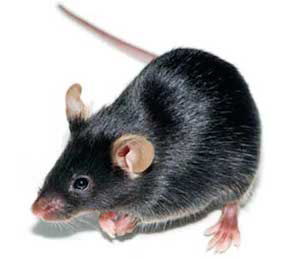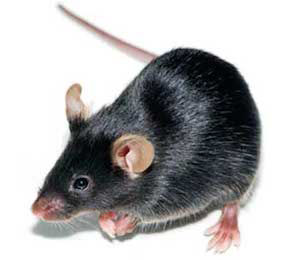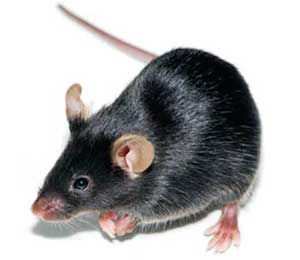| Model No. | Nomenclature | Genotype |
|---|---|---|
| 10471-F | C57BL/6-Gt(ROSA)26Sortm9(Cre/ESR1)Arte | ki/ki |
| 10471-M | C57BL/6-Gt(ROSA)26Sortm9(Cre/ESR1)Arte | ki/ki |
CreERT2

- Description
- Price & Licensing
- Health Report
- Overview
- Genetics
- Guides & Publications
- Applications & Therapeutic Areas
- Transit, Housing & Welfare
- Diet
Overview
Nomenclature: C57BL/6-Gt(ROSA)26Sortm9(Cre/ESR1)Arte
- Inducible general Cre deleter
- Tight and inducible regulation of Cre activity after tamoxifen administration
- Successful ubiquitous induction of Cre activity after tamoxifen administration in all tissues analyzed. Efficiency of deletion varies between different organs and different loxP flanked (floxed) target genes but usually exceeds 70%, except in the brain were deletion efficiency is lower.
- If a strain is maintained by homozygous sibling matings, breeders should be handled carefully and quietly to avoid poor breeding, loss of litters, or premature death
- For the generation of the experimental colony which will be used for induction of deletion of a floxed target gene, it is mandatory to always maintain the CreER in a heterozygous state, to diminish noninduced background recombination and possible side effects. In addition, background recombination may be enhanced, if embryos are exposed to CreER(T2) carrying mothers. It is therefore strongly recommended to breed CreER(T2) negative females which are heterozygous or homozygous for the floxed allele to CreER(T2) positive males which are wild type, heterozygous, or homozygous for the floxed allele. To avoid unwanted deletion of the floxed allele, it is strongly recommended to monitor the status of the floxed allele in the offspring from these breedings and to maintain the floxed parental line also in the absence of CreER(T2).
- When proper induction conditions are used, side effects are only seen in tamoxifen induced homozygous CreERT2 mice. Side effects include illness and lethality of tamoxifen induced animals, which may occur between 5 and 15 days after induction. Symptoms include: reduced mobility, weight loss, severe sustained diarrhea, and death. To avoid side effects, homozygous CreERT2 mice should not be induced. Taconic recommends a starting dose of 4.55 mg per dose for mice weighing 23 grams and 3 mg per dose for mice weighing 23 grams. Dosing should be by oral gavage. If side effects are seen, dose reduction should be pursued with monitoring of deletion of the target gene. Taconic recommends a pilot study with the proper experimental and control cohorts to optimize the induction protocol and to monitor the deletion of the floxed allele. Such pilots can be performed by Taconic.
- Ligand-independent Cre activity may occur at a low level and is likely due to proteolysis of the Cre fusion protein and subsequent nuclear transport. Our experience with breeding CreERT2 to a variety of floxed target genes is that approximately 25% of floxed alleles displaying some degree of ligand-independent Cre recombination. Among those floxed alleles affected, the percent of animals examined containing one or more copies of the recombined allele varied from below 1% to as high as 98%. Learn more by reading the related Taconic Insight, "Cre/loxP Recombination System: Applications, Best Practices, and Breeding Strategies".
Recommended Controls
The recommended control for this model is C57BL/6NTac.
Origin
Genetics
Guides & Publications
Initial Publication: Seibler J, Zevnik B, Küter-Luks B, Andreas S, Kern H, Hennek T, Rode A, Hiemann C, Faust N, Kauselmann G, Schoor M, Jaenisch R, Rajewsky K, Kühn R, Schwenk F. (2003) Rapid generation of inducible mouse mutants. Nucleic Acids Res 31(4):e12.
Applications & Therapeutic Areas
- Recombinase-mediated Gene Deletion
- Transgenic Model Generation Support
Transit, Housing & Welfare
Need more info? Click the live chat button or Contact Us
Packing Practices
Taconic standard practice is to recombine animals of different home cages and/or ages from a single model and sex during packing, except in specific cases where Taconic's animal welfare policy prohibits recombination due to aggression or other concerns. When an order is fulfilled with animals from more than one week of birth, this standard practice results in animals from a range of birth weeks packed together in a single TTC. When an order is fulfilled with animals from genotyped models, this standard practice results in animals from different home cages packed together in a single TTC.
Customers who wish to keep animals from different weeks of birth separated should place orders with the special instruction "Divide and label by age." Note that this special request can result in increased costs for additional Taconic Transit Cages, dividers and/or freight charges.
Taconic discourages other types of custom packing requests as they can have a negative impact on animal welfare. Learn more.
Diet
- Licensing
- Pricing - USD
- Pricing - EUR
- Pricing - DKK
- Pricing - USD Nonprofit
- Select my Health Standard
- Get Custom Pricing Guide
Licensing
- $5,780/€5,260 per year for nonprofit users
- $27,525/€25,080 per year for for-profit users
Pricing - USD
Opportunist Free (OF) Health Standard
10471 Female
10471-F Genotype ki/ki
Cohorts are reserved upon order placement and will take 2-4 weeks to fulfill. An estimated lead time will be provided to you within 2-3 business days.
| Age in Weeks | Quantity 1 - 999 |
|---|---|
| 3 to 10 | US$435.63 |
10471 Male
10471-M Genotype ki/ki
Cohorts are reserved upon order placement and will take 2-4 weeks to fulfill. An estimated lead time will be provided to you within 2-3 business days.
| Age in Weeks | Quantity 1 - 999 |
|---|---|
| 3 to 10 | US$435.63 |
Pricing - EUR
Opportunist Free (OF) Health Standard
10471 Female
10471-F Genotype ki/ki
Cohorts are reserved upon order placement and will take 2-4 weeks to fulfill. An estimated lead time will be provided to you within 2-3 business days.
| Age in Weeks | Quantity 1 - 999 |
|---|---|
| 3 to 10 | 396,68 € |
10471 Male
10471-M Genotype ki/ki
Cohorts are reserved upon order placement and will take 2-4 weeks to fulfill. An estimated lead time will be provided to you within 2-3 business days.
| Age in Weeks | Quantity 1 - 999 |
|---|---|
| 3 to 10 | 396,68 € |
Pricing - DKK
Opportunist Free (OF) Health Standard
10471 Female
10471-F Genotype ki/ki
Cohorts are reserved upon order placement and will take 2-4 weeks to fulfill. An estimated lead time will be provided to you within 2-3 business days.
| Age in Weeks | Quantity 1 - 999 |
|---|---|
| 3 to 10 | kr.2.950,98 |
10471 Male
10471-M Genotype ki/ki
Cohorts are reserved upon order placement and will take 2-4 weeks to fulfill. An estimated lead time will be provided to you within 2-3 business days.
| Age in Weeks | Quantity 1 - 999 |
|---|---|
| 3 to 10 | kr.2.950,98 |
Pricing - USD Nonprofit
Opportunist Free (OF) Health Standard
10471 Female
10471-F Genotype ki/ki
Cohorts are reserved upon order placement and will take 2-4 weeks to fulfill. An estimated lead time will be provided to you within 2-3 business days.
| Age in Weeks | Quantity 1 - 999 |
|---|---|
| 3 to 10 | US$435.63 |
10471 Male
10471-M Genotype ki/ki
Cohorts are reserved upon order placement and will take 2-4 weeks to fulfill. An estimated lead time will be provided to you within 2-3 business days.
| Age in Weeks | Quantity 1 - 999 |
|---|---|
| 3 to 10 | US$435.63 |
Select my Health Standard
Need help choosing the right Taconic Biosciences health standard for your research?
Use the Health Standard Selector to enter your exclusion list. The tool will tell you which health standards meet your requirements.
Get custom pricing guide
Schedule A Scientific Consultation
Connect directly with a member of our Scientific Solutions team who can help you select the most appropriate model and maximize your experimental success.
















.jpg)

.jpg)
.jpg)
.jpg)
.jpg)





.jpg)


.jpg)
.jpg)




.jpg)




.jpg)

.jpg)





